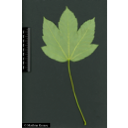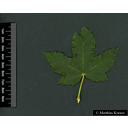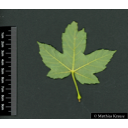Useful information about the taxon (species, subspecies, variety...)
Acer pseudoplatanus L. 1753
Sapindaceae (APG IV)
sycamore maple, sycamore
Akzessionnummer: EG-L-093-16926
Pflanzjahr: 0
Sorry, we have no imagery here.
Sorry, we have no imagery here.
Sorry, we have no imagery here.
Sorry, we have no imagery here.
Sorry, we have no imagery here.
Sorry, we have no imagery here.
Acer pseudoplatanus L.
Sapindaceae
Acer pseudoplatanus L.
Sapindaceae
Acer pseudoplatanus L.
Sapindaceae
Acer pseudoplatanus L.
Sapindaceae
Acer pseudoplatanus L.
Sapindaceae
Acer pseudoplatanus L.
Sapindaceae
Acer pseudoplatanus L.
Sapindaceae
Acer pseudoplatanus L.
Sapindaceae
Acer pseudoplatanus L.
Sapindaceae
Acer pseudoplatanus L.
Sapindaceae
Acer pseudoplatanus L.
Sapindaceae
Acer pseudoplatanus L.
Sapindaceae
Acer pseudoplatanus L.
Sapindaceae
Acer pseudoplatanus L.
Sapindaceae
Acer pseudoplatanus L.
Sapindaceae
Acer pseudoplatanus L.
Sapindaceae
Acer pseudoplatanus L.
Sapindaceae
Acer pseudoplatanus L.
Sapindaceae
Taxon concept: The Plant List (2010)
Distribution: Europe without the British Isles and Scandinavia; Turkey, Caucasus
Size: 15 - 30 (m)Flowering period: V - VI
Acer pseudoplatanus L. - Accepted: Acer pseudoplatanus L. bei The Plant List (2010); Familie: Sapindaceae (APG III)
Acer pseudoplatanus L. - Accepted: Acer pseudoplatanus L. bei Zander 2008; Familie: Aceraceae (Zander 2008)
Acer pseudoplatanus L. - Accepted: Acer pseudoplatanus L. bei The Plant List (2014), version 1.1; Familie: Sapindaceae (APG III)
Acer pseudoplatanus L. - Accepted: Acer pseudoplatanus L. bei BfN Checklist Flora DE; Familie: Sapindaceae (APG IV)
Acer pseudoplatanus L. - Accepted: Acer pseudoplatanus L. bei The Plant List (2014), version 1.1; Familie: Sapindaceae (APG IV)
Acer pseudoplatanus L. - Accepted: Acer pseudoplatanus L. bei Schmeil-Fitschen 2019; Familie: Sapindaceae (APG IV)
Acer pseudoplatanus L. - Accepted: Acer pseudoplatanus L. bei Rothmaler 2017; Familie: Sapindaceae (APG IV)
Acer pseudoplatanus L. - Accepted: Acer pseudoplatanus L. bei Zander 2008; Familie: Aceraceae (Zander 2008)
Acer pseudoplatanus L. - Accepted: Acer pseudoplatanus L. bei The Plant List (2014), version 1.1; Familie: Sapindaceae (APG III)
Acer pseudoplatanus L. - Accepted: Acer pseudoplatanus L. bei BfN Checklist Flora DE; Familie: Sapindaceae (APG IV)
Acer pseudoplatanus L. - Accepted: Acer pseudoplatanus L. bei The Plant List (2014), version 1.1; Familie: Sapindaceae (APG IV)
Acer pseudoplatanus L. - Accepted: Acer pseudoplatanus L. bei Schmeil-Fitschen 2019; Familie: Sapindaceae (APG IV)
Acer pseudoplatanus L. - Accepted: Acer pseudoplatanus L. bei Rothmaler 2017; Familie: Sapindaceae (APG IV)
- Color of flower
- yellowish green
- Flowers
- monoecious, flowers in hanging racemes
- Flower ecology
- insect-pollinated (entomophilous)
- Life form
- woody, tree
- Leaves
- opposite, palmately lobed
- Foliage persistence
- deciduous
- Fruits
- winged nut (samara)
- Fruit ecology
- wind-dispersed (anemochorous)
- Soil conditions
- on perculating fresh to moist, nutrient-rich and alkaline, mildly to moderately acidic, loose, humus-rich, stony, medium to deep loam or scree soils
- Light conditions
- shade to semi-shade plant
- Root type
- deep-rooted plant
- Succession type
- pioneer species
- Natural occurrence (habitat)
- ravine forests, montane forests, moist slip-off slopes, steep rocky slopes, also in floodplain forests
- Comment to ecology
- soil stabiliser
- Status of alien naturalisation
- indigenous
- Usage
- wood is used for making furniture, for turnery, joinery, indoor flooring and musical instruments
- Phytopathogenic organisms
- leaves may be severely affected by several ascomycete fungi such as Pleuroceras pseudoplatani
Bundesamt für Naturschutz (BfN) (1999-2001 and ongoing): Floraweb - Daten und Informationen zu Wildpflanzen und zur Vegetation Deutschlands. www.floraweb.de.;
Erhardt, W., Götz, E., Bödeker, N. & Seybold, S. (2008): Der große Zander. Enzyklopädie der Pflanzennamen. Band 2. Arten und Sorten. Eugen Ulmer KG, Stuttgart (Hohenheim), 18. Aufl., 2103 S.;
Jäger, E. J. et al. (2007): Rothmaler - Exkursionsflora von Deutschland. Band 5: Krautige Zier- und Nutzpflanzen. Spektrum Akademischer Verlag, Aufl. 31.10.2007: 880.;
Parolly, G. et al. (2019): Schmeil-Fitschen: Die Flora Deutschlands und angrenzender Länder.. Quelle & Meyer Verlag, Wiebelsheim, 97. Aufl.;
Smart, L. B. et al. (2005): Genetic improvement of shrub willow (Salix spp.) crops for bioenergy and environmental applications in the United States. Unasylva, 56: 51-55.;
The IUCN Red List of Threatened Species. www.iucnredlist.org;
Westrich, P. et al. (2018): Die Wildbienen Deutschlands.. Ulmer Verlag ISBN 978-8186-0123-2.;
Erhardt, W., Götz, E., Bödeker, N. & Seybold, S. (2008): Der große Zander. Enzyklopädie der Pflanzennamen. Band 2. Arten und Sorten. Eugen Ulmer KG, Stuttgart (Hohenheim), 18. Aufl., 2103 S.;
Jäger, E. J. et al. (2007): Rothmaler - Exkursionsflora von Deutschland. Band 5: Krautige Zier- und Nutzpflanzen. Spektrum Akademischer Verlag, Aufl. 31.10.2007: 880.;
Parolly, G. et al. (2019): Schmeil-Fitschen: Die Flora Deutschlands und angrenzender Länder.. Quelle & Meyer Verlag, Wiebelsheim, 97. Aufl.;
Smart, L. B. et al. (2005): Genetic improvement of shrub willow (Salix spp.) crops for bioenergy and environmental applications in the United States. Unasylva, 56: 51-55.;
The IUCN Red List of Threatened Species. www.iucnredlist.org;
Westrich, P. et al. (2018): Die Wildbienen Deutschlands.. Ulmer Verlag ISBN 978-8186-0123-2.;
Last update:
Taxonomic update: Helmut Dalitz on: 27.1.2021Update of the description: Helmut Dalitz; Matthias Krause; latest by: Matthias Krause on: 31.7.2019
In the list below you will find the geographic coordinates of many woody plants in the garden. In these cases the points are marked in the map.
If no coordinates are listed, the coordinate of the point in the map marks the middle coordinate of the section.




